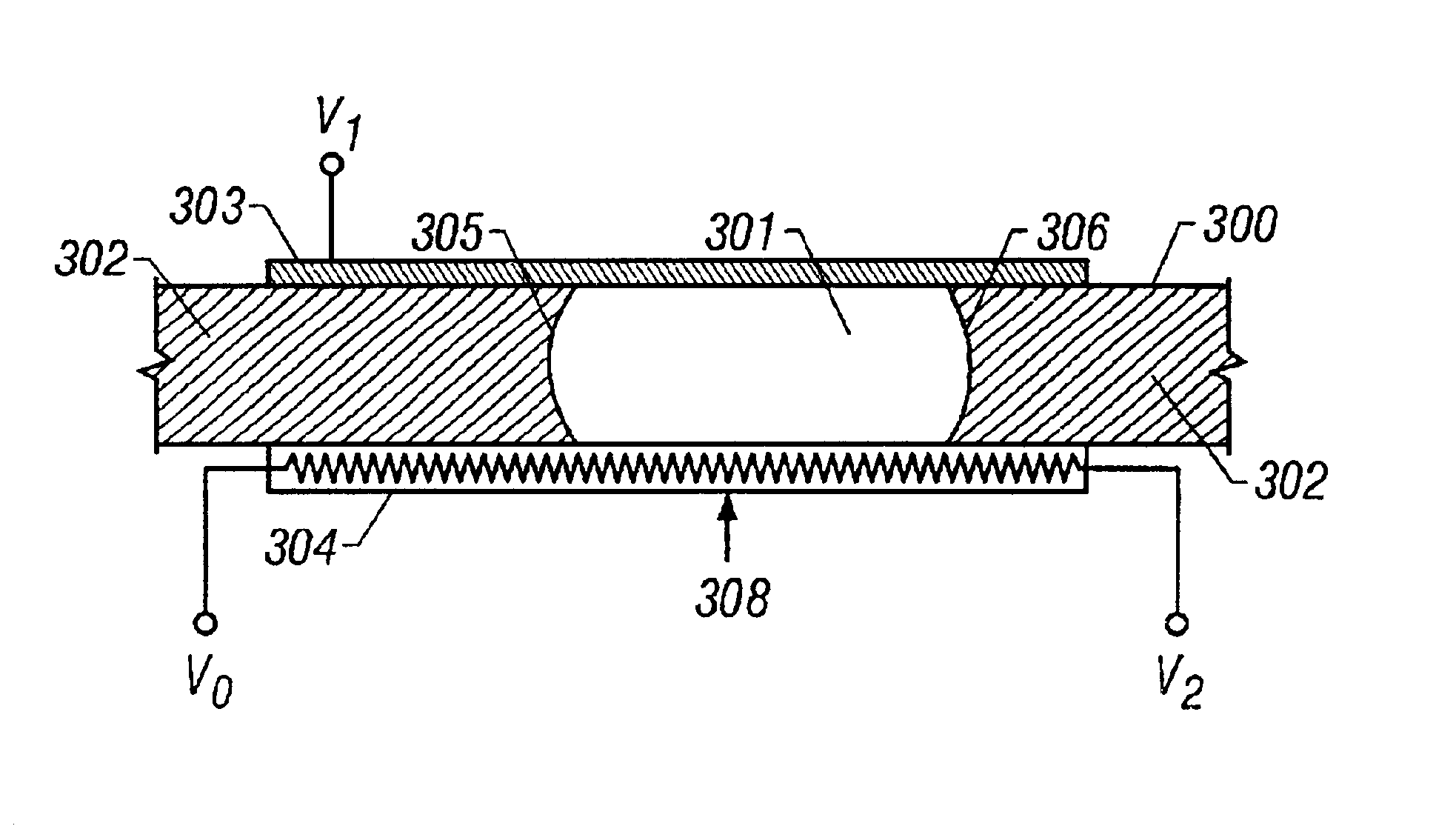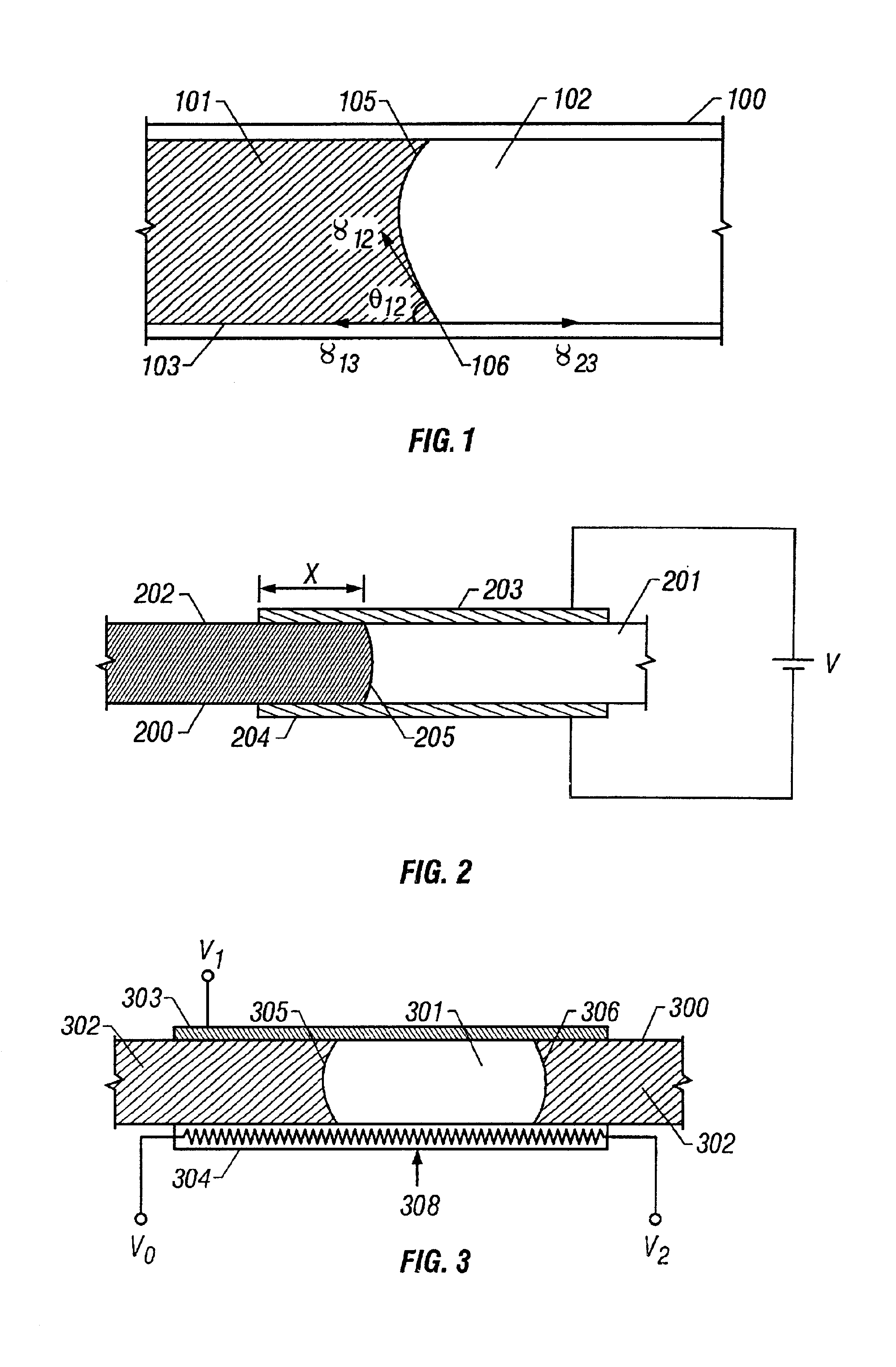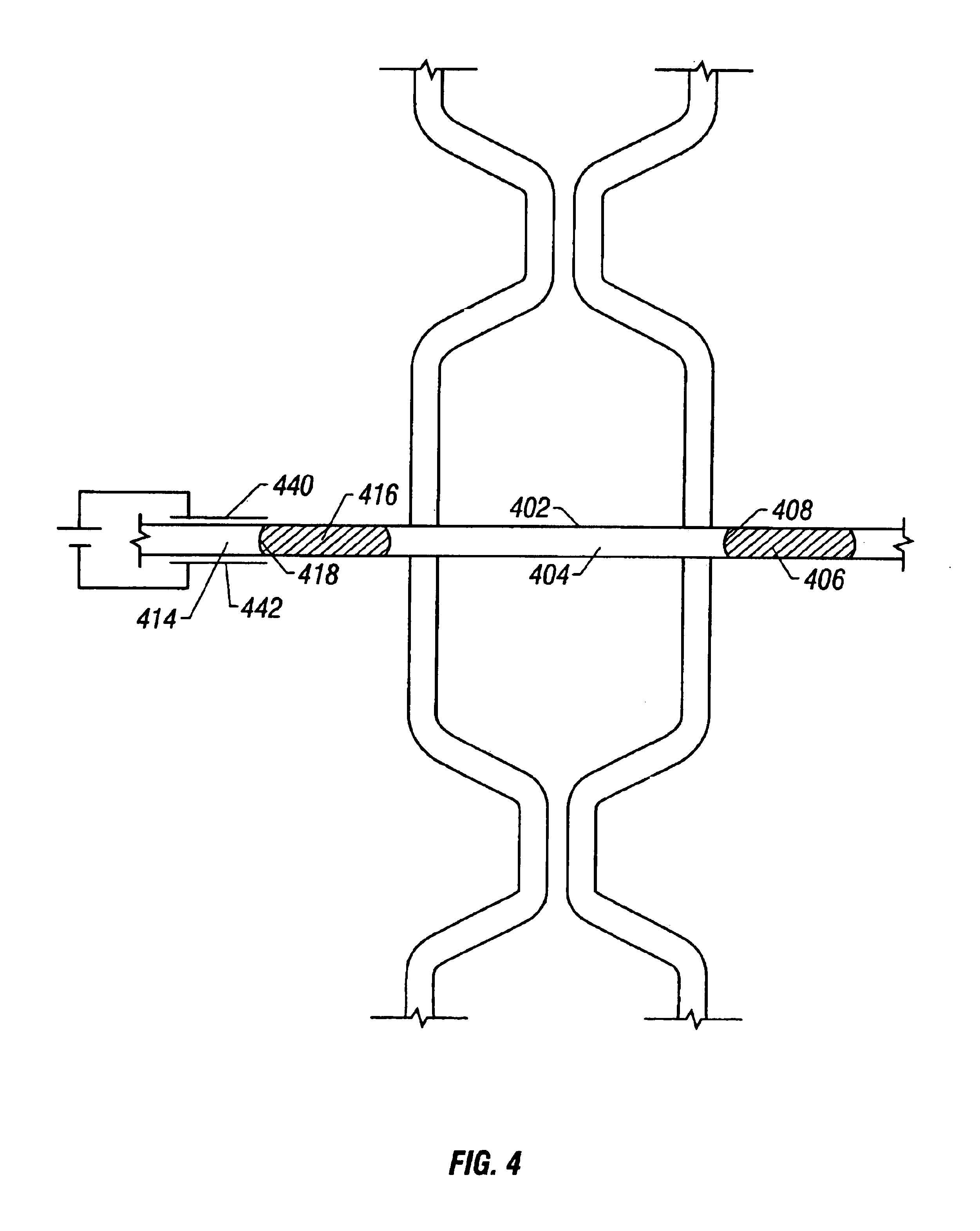Microfluidic control using dielectric pumping
a technology of dielectric pumping and microfluidics, which is applied in the direction of diaphragms, electrostatic separators, electrolysis, etc., can solve the problems of fluid movement and large pressure differentials, and achieve the effect of high performance and superior reliability
- Summary
- Abstract
- Description
- Claims
- Application Information
AI Technical Summary
Benefits of technology
Problems solved by technology
Method used
Image
Examples
Embodiment Construction
[0040]Several embodiments are discussed below and with reference to the attached drawings. These descriptions and drawings provide examples of certain embodiments of the invention and are not to be construed as limiting the scope of the invention. Instead, the invention is to be accorded the breadth as described herein and as defined in the claims that form part of this specification.
[0041]One factor in the operation of devices according to this invention is the ability to displace small volumes of liquid, in some cases only a few picoliters, in response to an electrical signal. Fluids can be moved by dielectric pumping or variable dielectric pumping, in which a difference in capacitance is used to move two dielectric fluids in contact with one another. Moving the fluid or fluids according to the principles disclosed herein can provide the low power dissipation and the material versatility sought of a preferred embodiment of this invention.
[0042]Following is a detailed description o...
PUM
| Property | Measurement | Unit |
|---|---|---|
| depth | aaaaa | aaaaa |
| width | aaaaa | aaaaa |
| radius | aaaaa | aaaaa |
Abstract
Description
Claims
Application Information
 Login to View More
Login to View More - R&D
- Intellectual Property
- Life Sciences
- Materials
- Tech Scout
- Unparalleled Data Quality
- Higher Quality Content
- 60% Fewer Hallucinations
Browse by: Latest US Patents, China's latest patents, Technical Efficacy Thesaurus, Application Domain, Technology Topic, Popular Technical Reports.
© 2025 PatSnap. All rights reserved.Legal|Privacy policy|Modern Slavery Act Transparency Statement|Sitemap|About US| Contact US: help@patsnap.com



